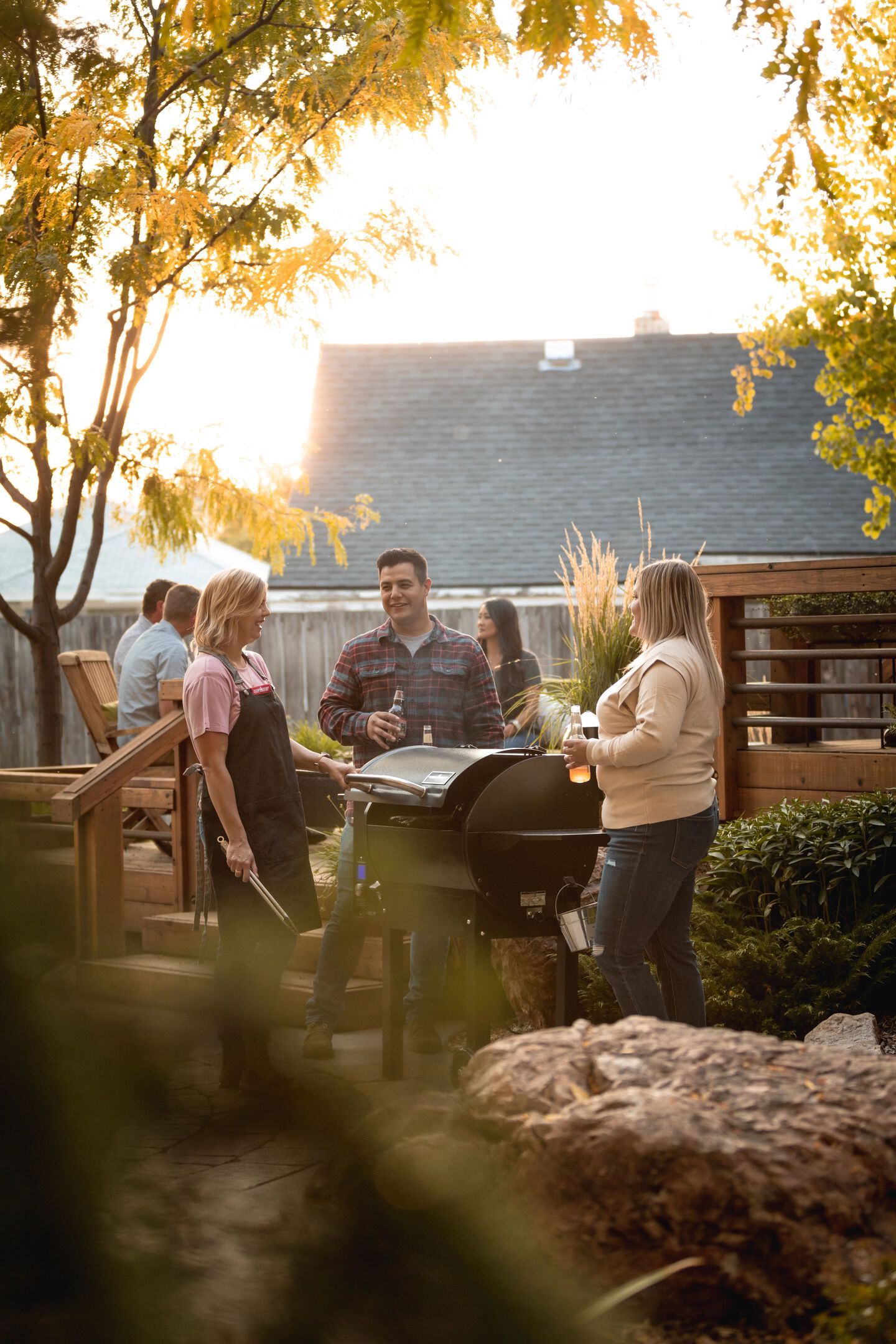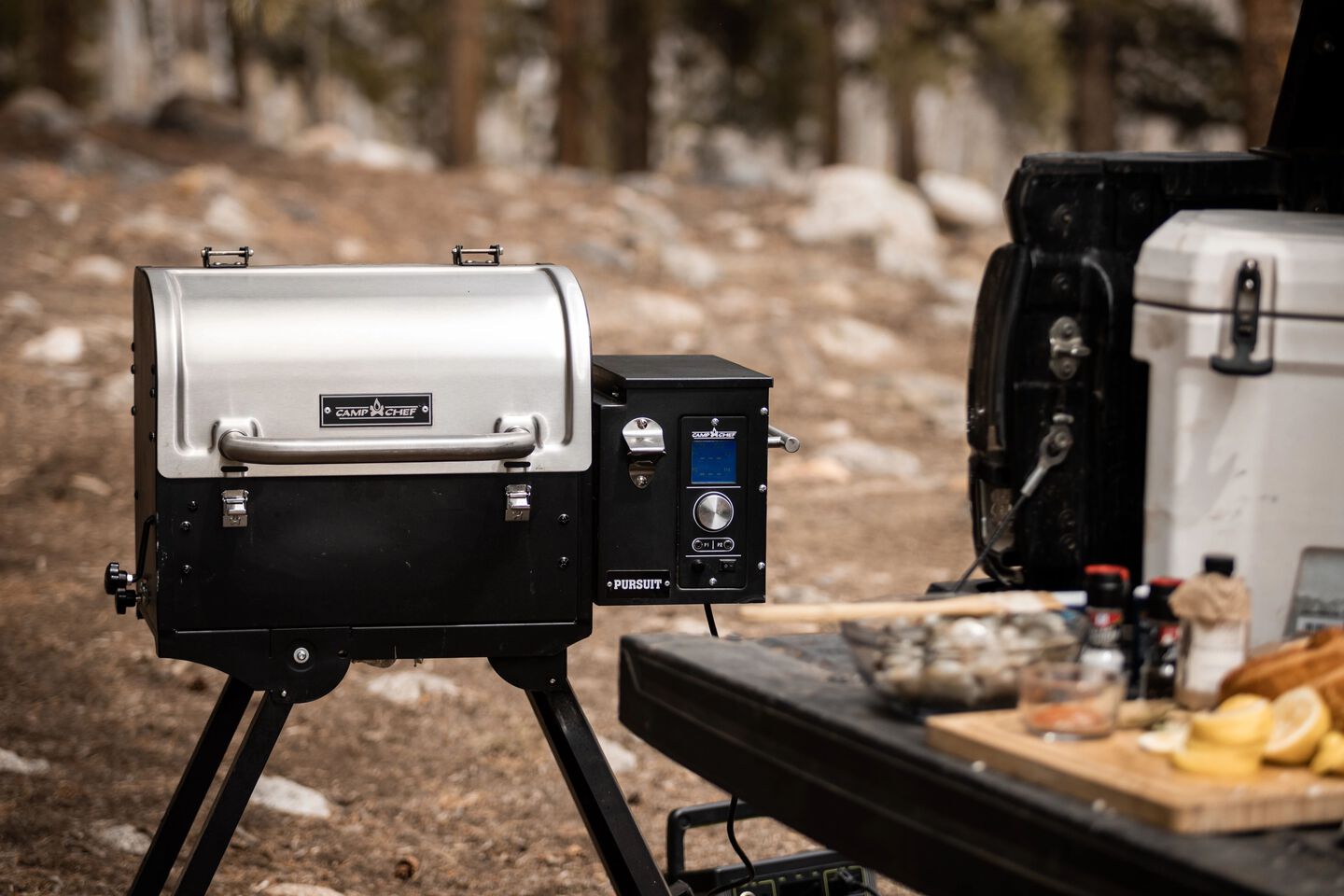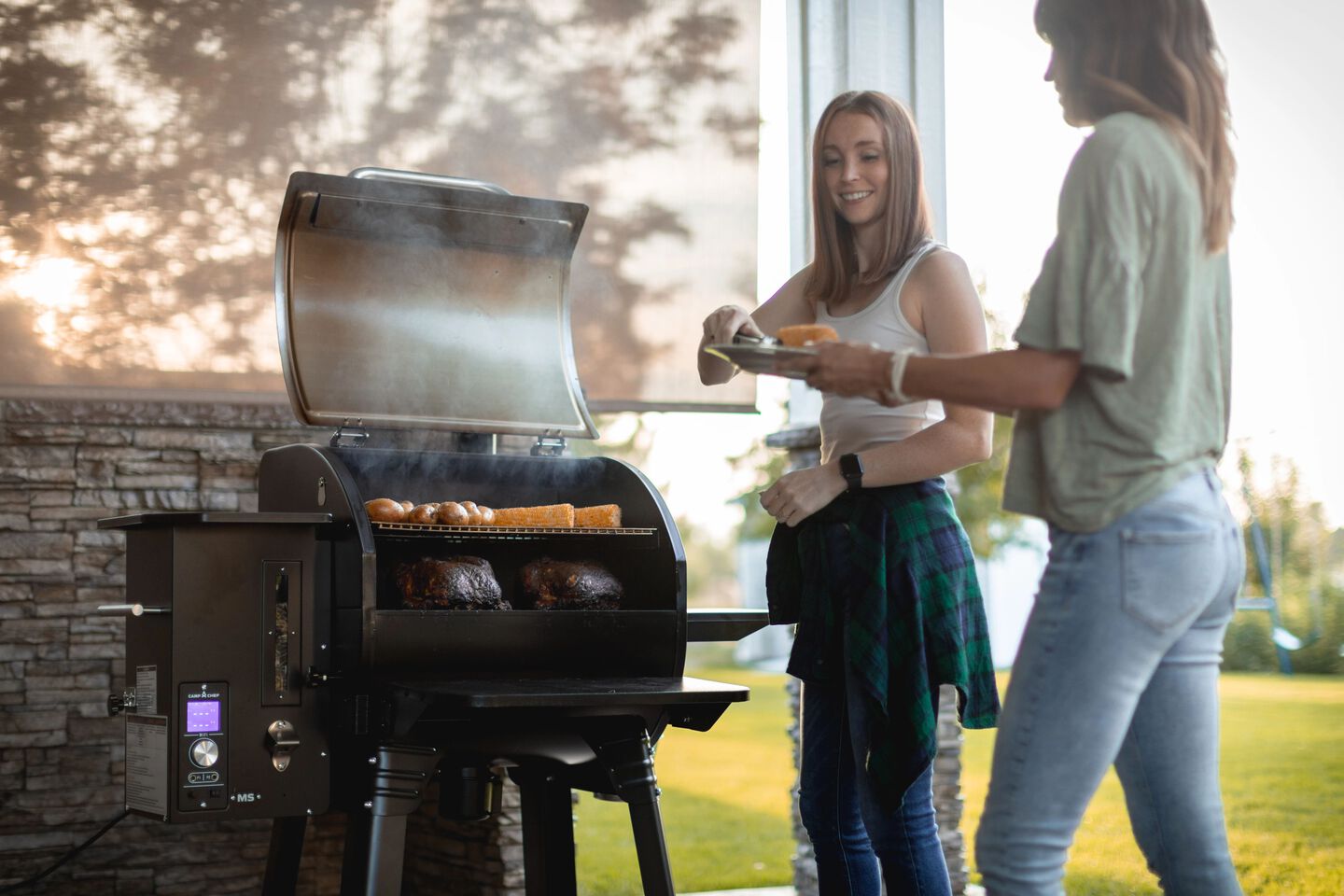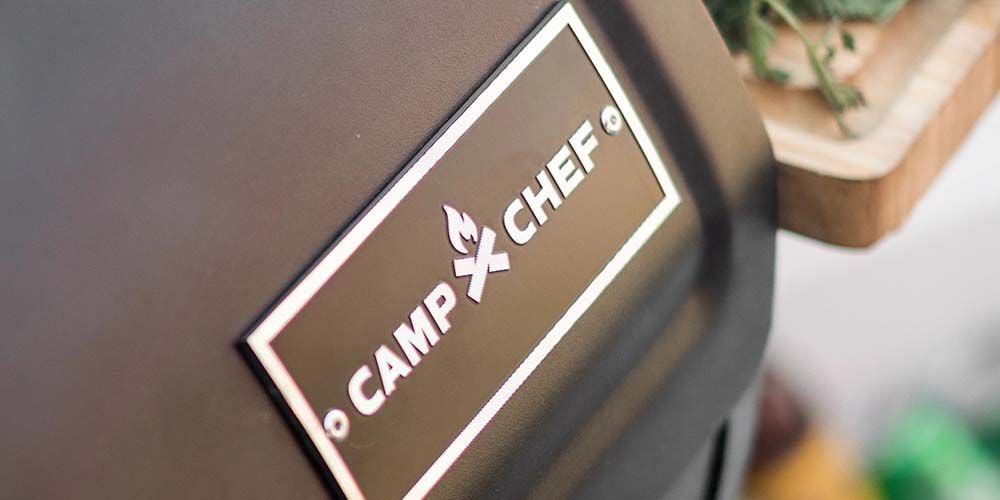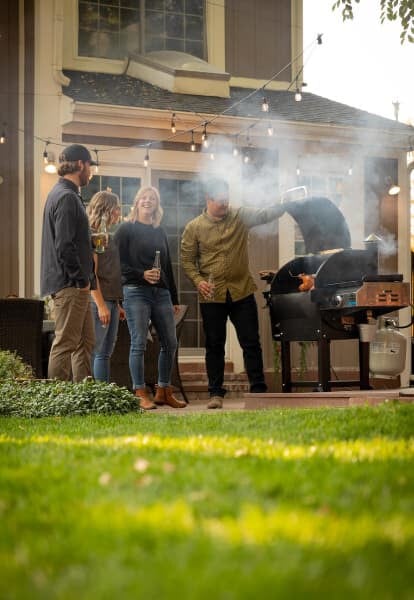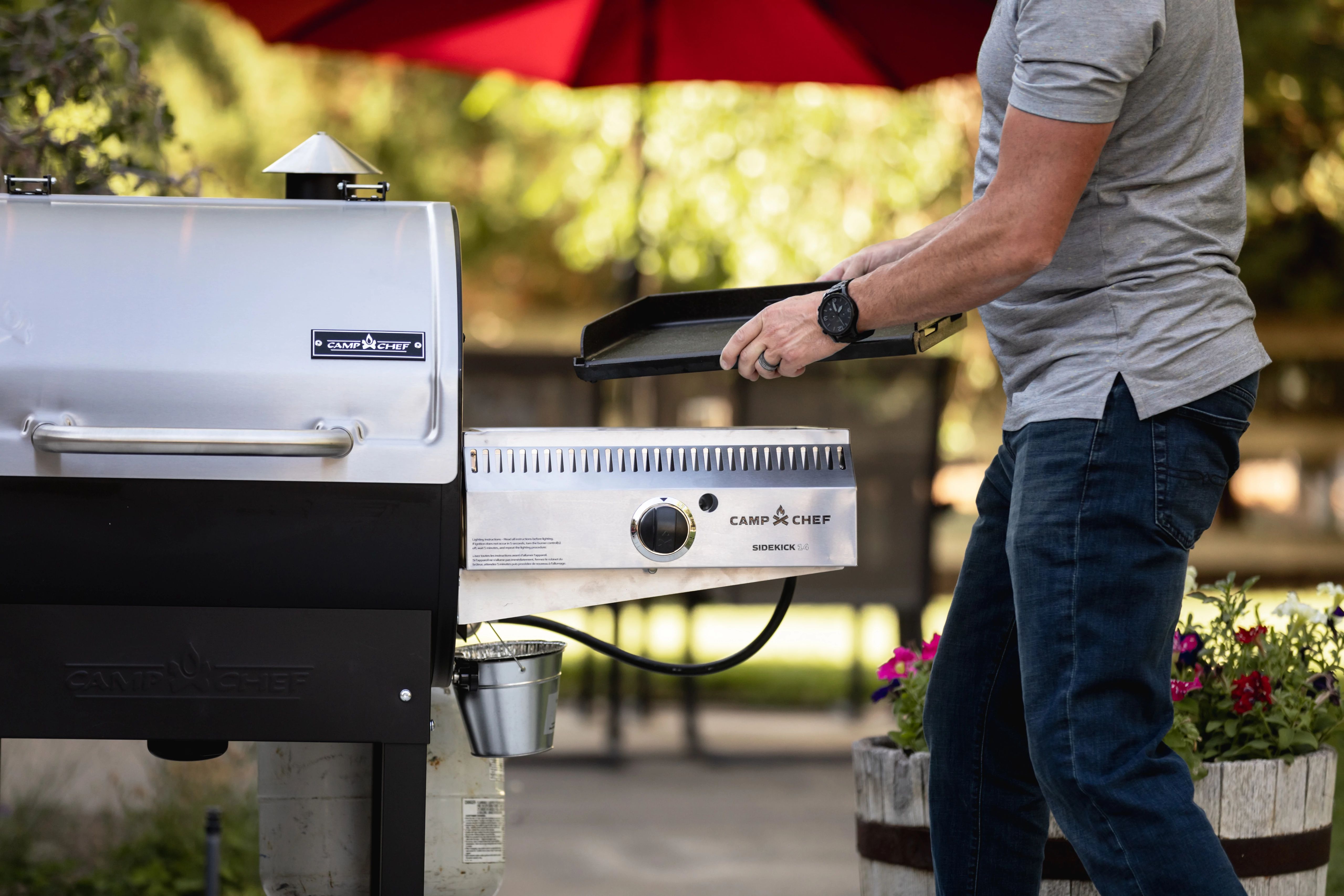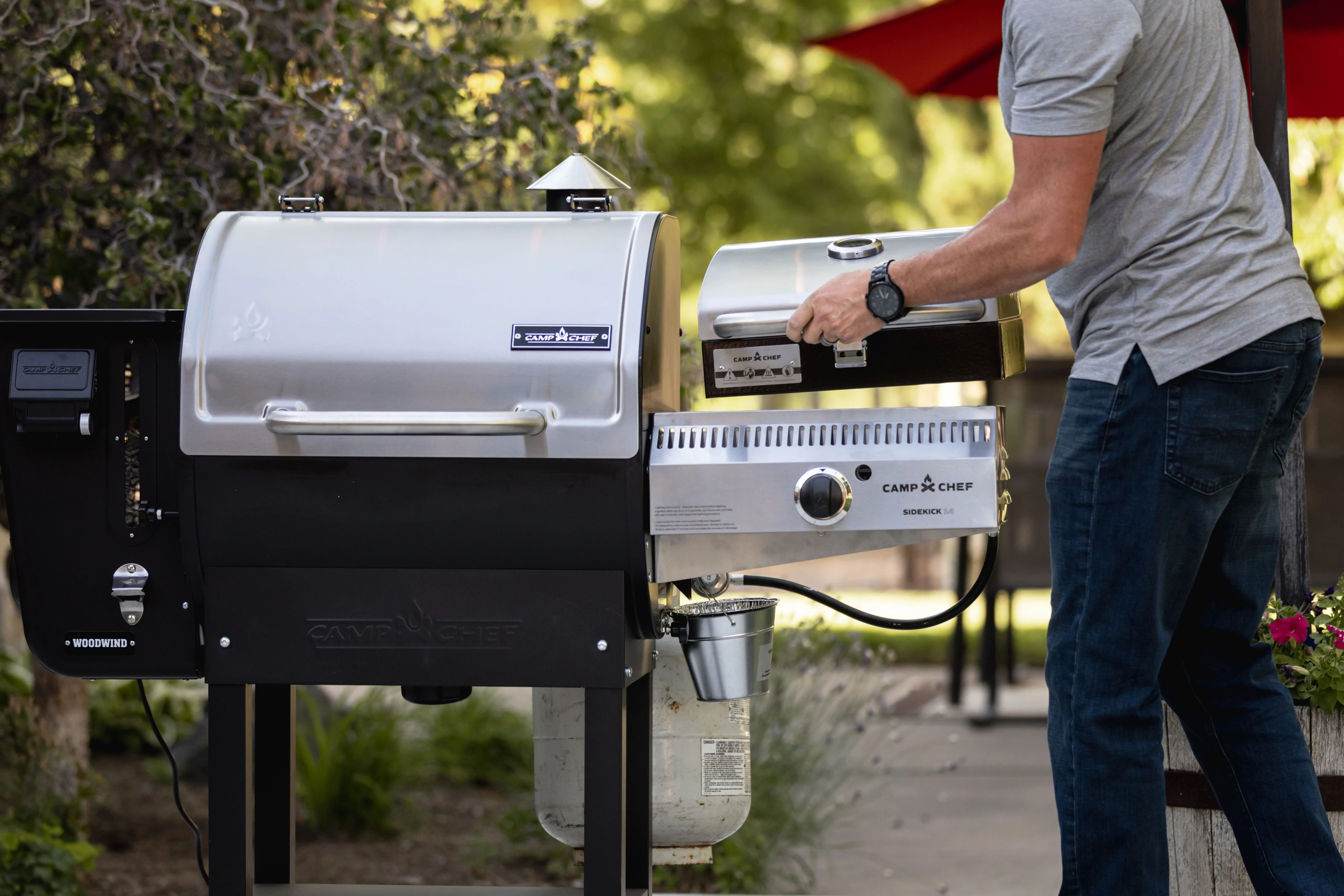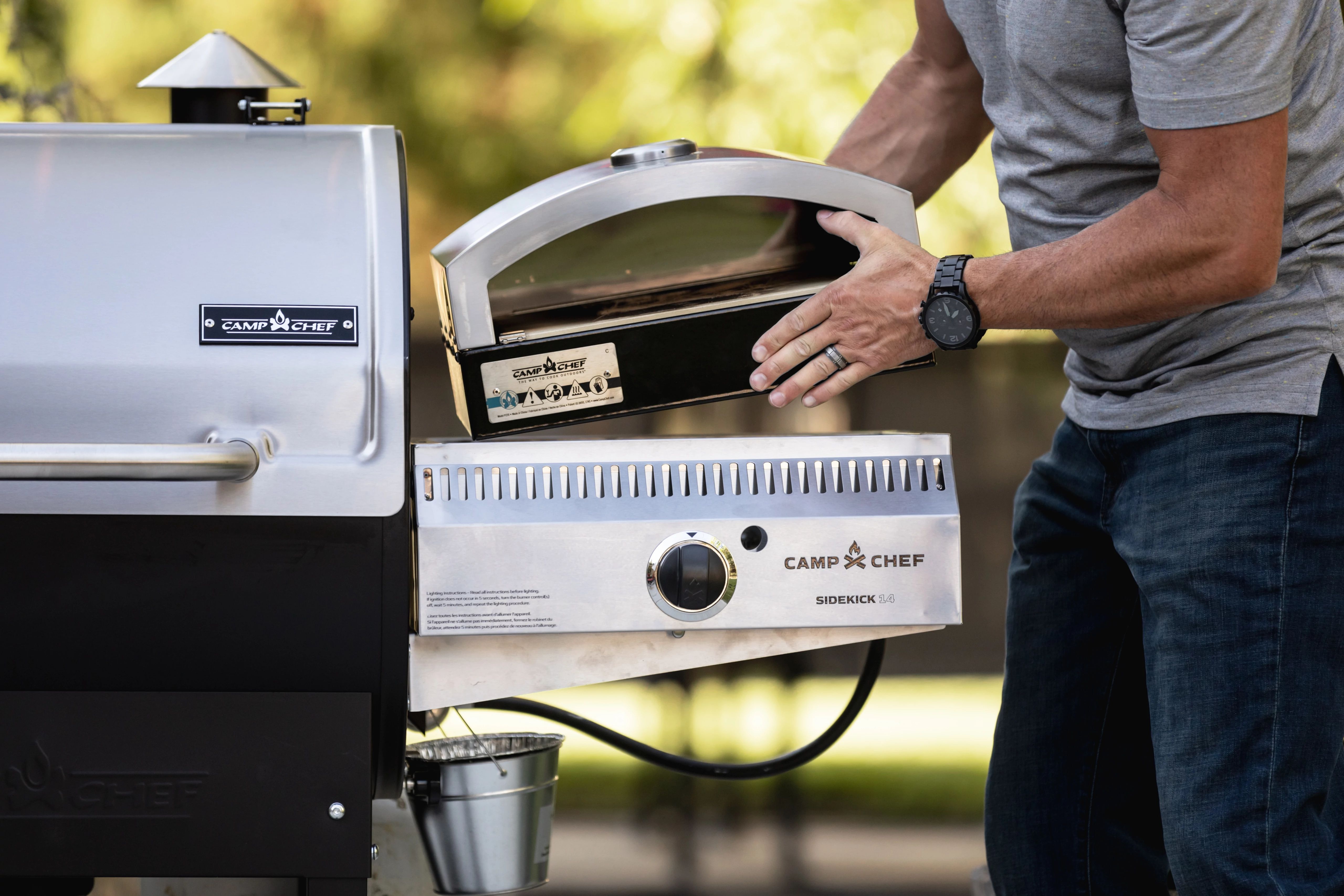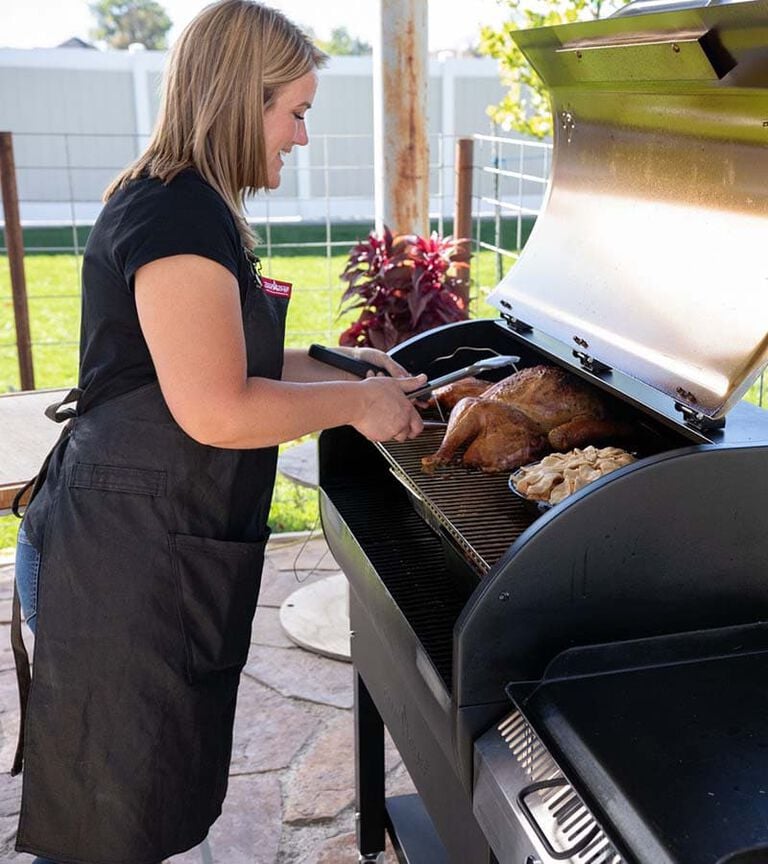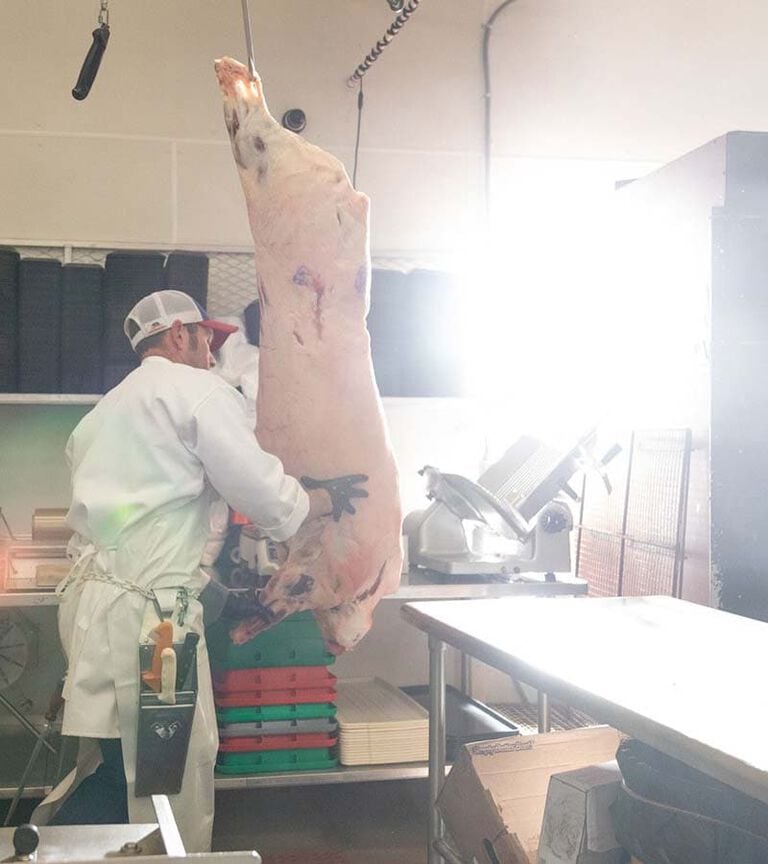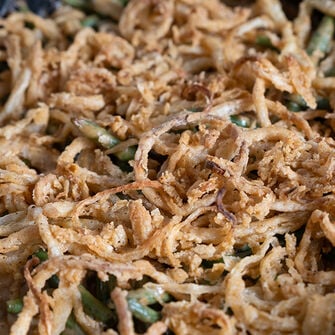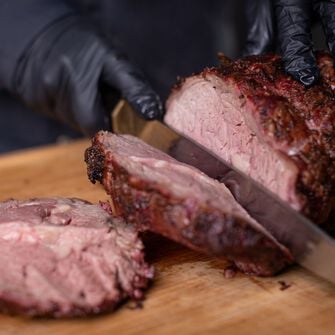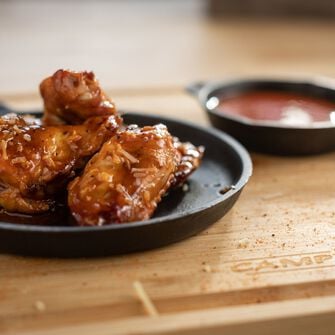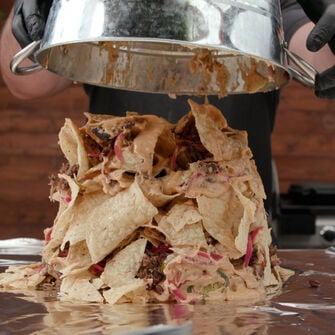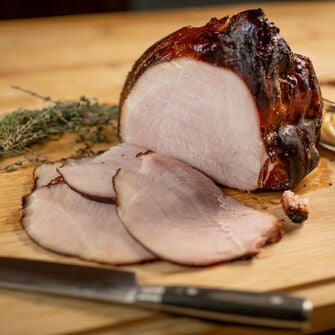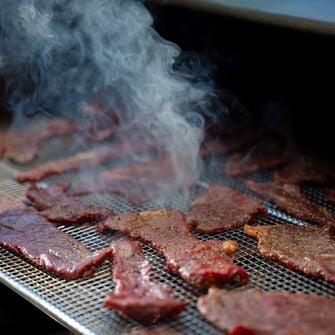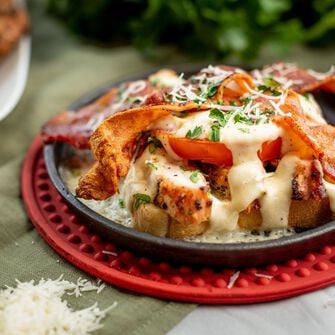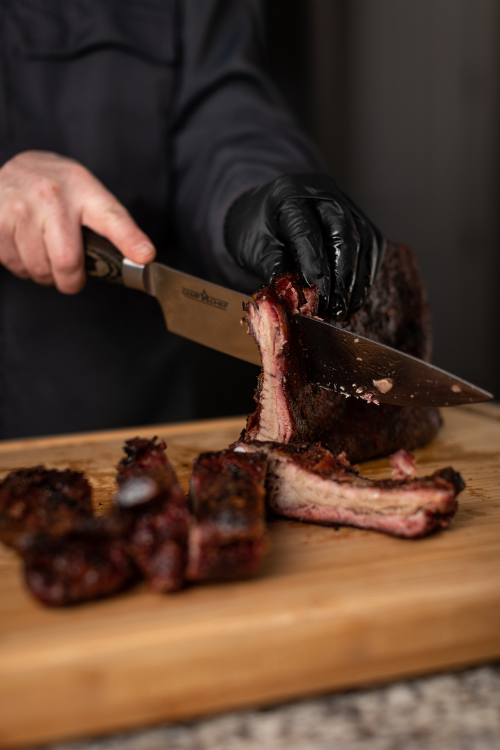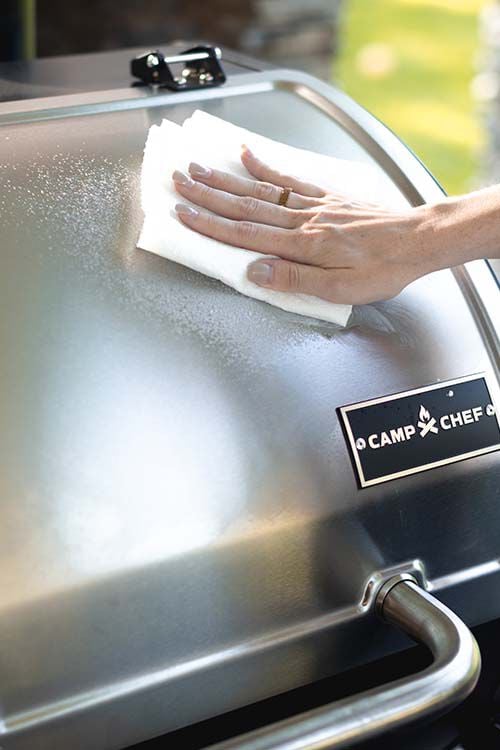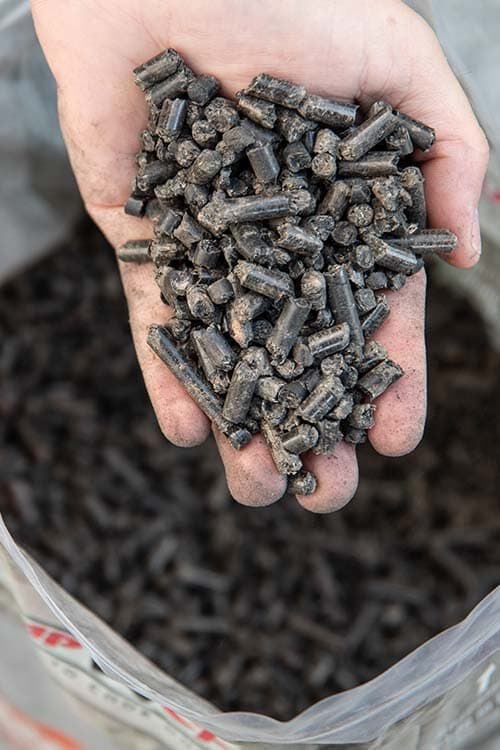Learn
sidekick season
Give your pellet grill the gorgeous, yet practical upgrade it deserves. With the Sidekick Sear station you'll master the reverse sear all on one backyard unit. With the best of both worlds—smoking and searing—what more could you ask for? Upgrade and open your grilling world to the endless possibilities of other 1-burner 14" accessories.
*Sidekick only attaches to full-sized Camp Chef Pellet Grills
FEATURES
- SET TOP ACCESSORY COMPATIBLE
- HIGH OUTPUT 28K BTU BURNER
- MATCHLESS IGNITION
- EASY CLEAN CONSTRUCTION
- STAINLESS STEAL
HOW TO VIDEOS
Pellet Grill Start Up
Ash Clean Out
Frequently Asked Questions
To get the most smoke flavor when cooking with a smoker or grill, there are several factors to consider:
- Fuel: Choose a fuel that produces a lot of smoke, such as wood or wood pellets. Avoid using fuels like propane or natural gas, which produce little to no smoke.
- Wood type: Different types of wood produce different flavors, so choose a wood that complements the type of food you're cooking. For example, hickory is great for pork, mesquite for beef, and apple for poultry.
- Smoke duration: The longer the food is exposed to smoke, the more flavor it will absorb. Try to smoke the food for at least several hours to get the maximum flavor.
- Smoke temperature: The temperature of the smoke is important, as too high of a temperature can cause the food to cook too quickly and not absorb enough smoke. Try to maintain a smoke temperature of 225-250°F for the best results.
- Smoke placement: The placement of the food in relation to the smoke source is important, as different parts of the food will absorb different amounts of smoke. Try to place the food as close to the smoke source as possible while still maintaining the proper temperature.
- Wood moisture: Wet or green wood will produce more smoke than dry wood, so try to use wood that has a moisture content of less than 20%.
In conclusion, to get the most smoke flavor when cooking with a smoker or grill, choose a fuel that produces a lot of smoke, use a wood type that complements the food, smoke the food for a long period of time, maintain a low smoke temperature, place the food close to the smoke source, and use dry wood.
There are several benefits to using wood pellets as fuel in outdoor cooking equipment such as pellet grills and vertical pellet smokers:
- Convenience: Wood pellets are easy to store and transport, and they don't require the same preparation as charcoal or wood. Simply pour them into the hopper and you're ready to cook.
- Consistency: Wood pellets are uniform in size and composition, which means that they burn consistently and produce a consistent amount of heat and smoke. This can help ensure consistent cooking results.
- Efficiency: Wood pellets are a clean-burning fuel that produce very little ash and minimal creosote buildup in the cooking chamber. This makes cleaning up after cooking easier and can help extend the life of your equipment.
- Flavor: Wood pellets are available in a variety of flavors, including hickory, mesquite, apple, and cherry, which allows you to add unique flavors to your food as it smokes.
- Temperature control: Many pellet grills and vertical pellet smokers come with automatic feeding systems and digital temperature control, which makes it easy to regulate the temperature for cooking.
In conclusion, burning wood pellets as fuel in outdoor cooking equipment offers several benefits, including convenience, consistency, efficiency, flavor, and temperature control.
When looking for a pellet grill, there are several factors to consider to ensure you get the best cooking experience:
- Cooking area: Consider the size of your cooking area and make sure you choose a pellet grill with enough space to cook the amount of food you need.
- Heat output: Look for a pellet grill with a high heat output, as this will allow you to cook food quickly and at high temperatures.
- Temperature control: A good pellet grill should have precise temperature control, so you can cook your food to your desired doneness.
- Ease of use: Look for a pellet grill that is easy to use, with straightforward controls and simple assembly.
- Pellet hopper capacity: Make sure the pellet hopper has enough capacity to cook your food without having to refill it frequently.
- Build quality: Choose a pellet grill that is well-constructed and made from high-quality materials, so it will last for years and withstand outdoor elements.
- Warranty: Look for a pellet grill that comes with a good warranty, in case of any manufacturing defects or malfunctions.
- Additional features: Consider if you want additional features such as a built-in thermometer, ash collection system, or side shelves.
In conclusion, when looking for a pellet grill, consider the cooking area, heat output, temperature control, ease of use, pellet hopper capacity, build quality, warranty, and any additional features you may want.
#FEEDYOUROUTSIDE
